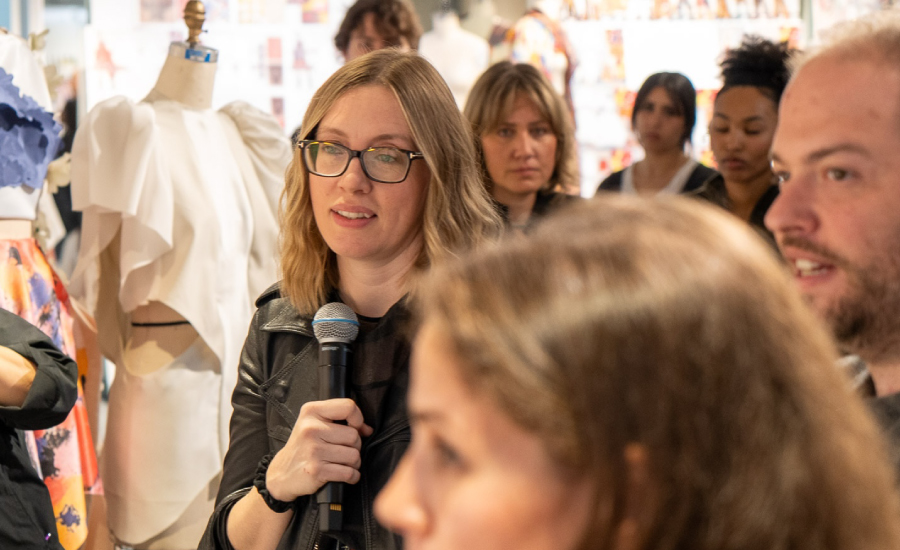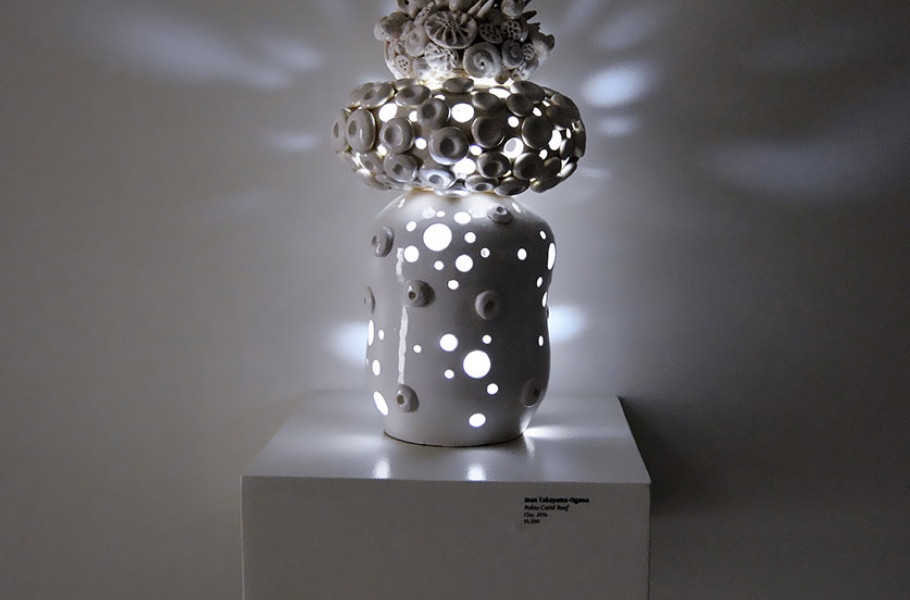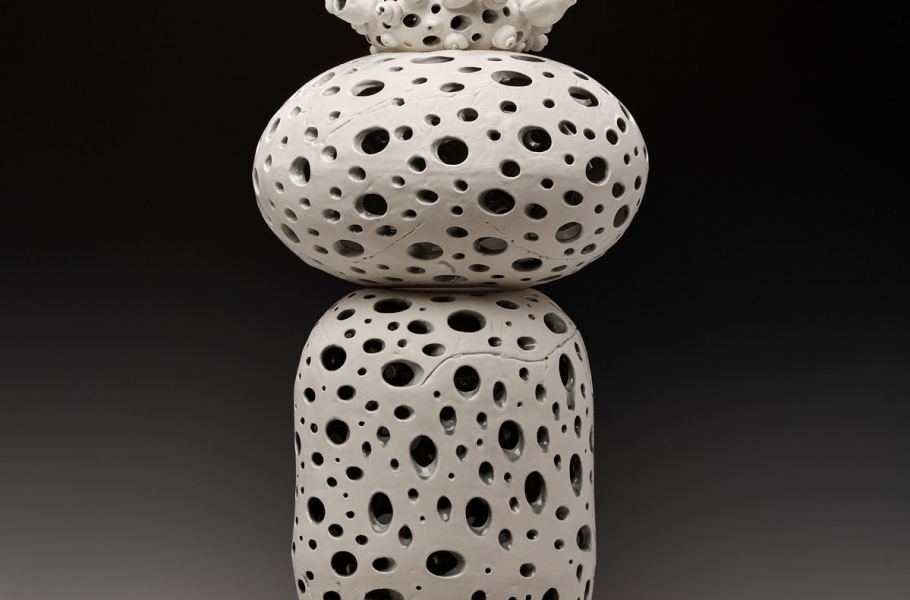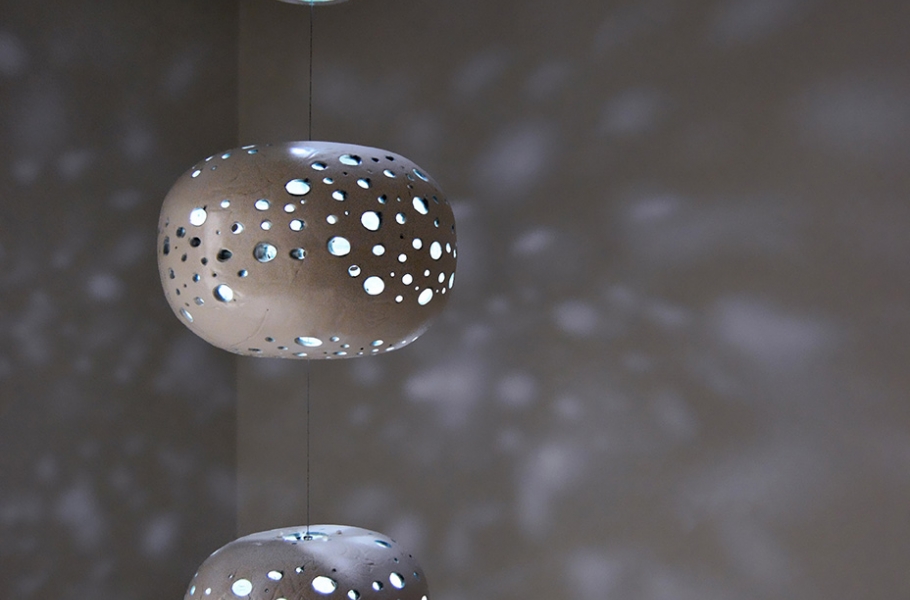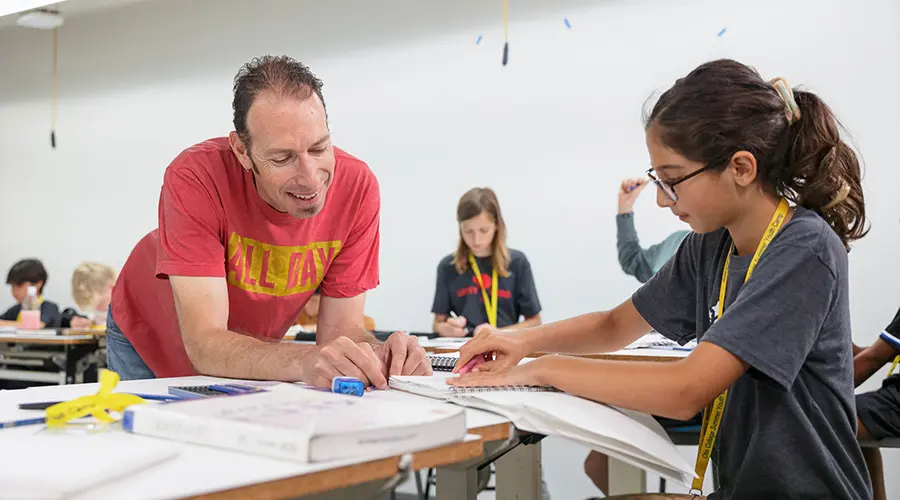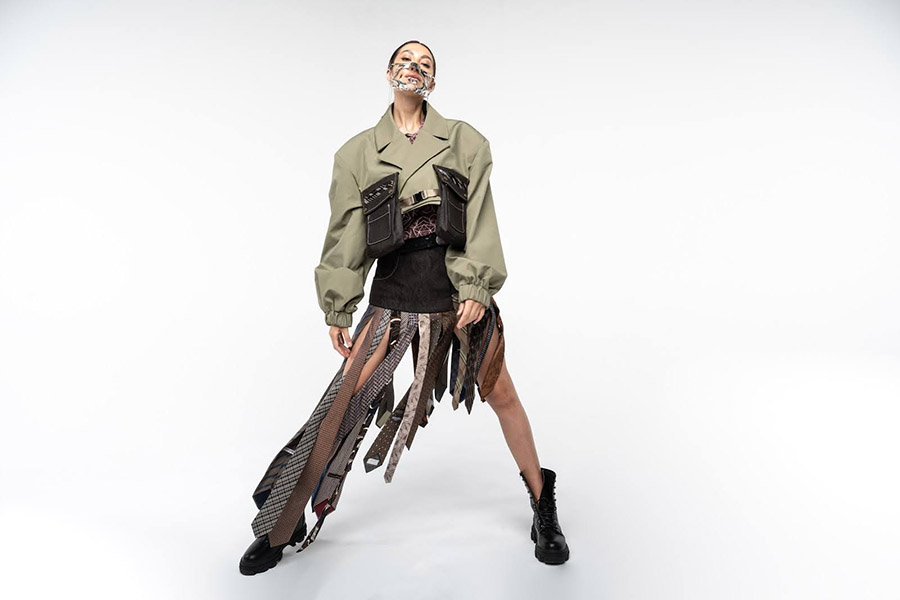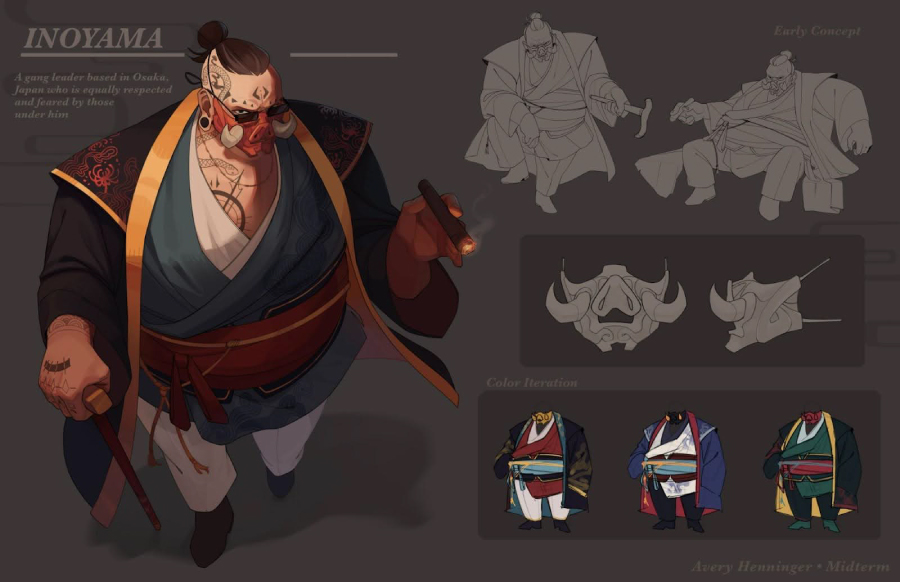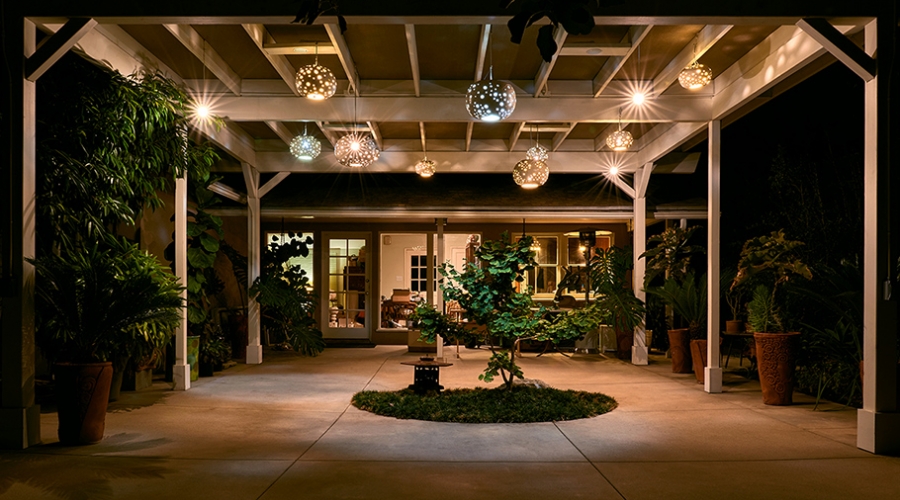
Otis College Extension is where it all began for Joan Takayama-Ogawa.
She’s known for her exquisitely precise artistry, but deep down, Joan Takayama-Ogawa sees ceramics as a contact sport. “It’s very physically demanding,” says the Pasadena native and Otis College Extension instructor. “Think of lifting all that clay!”
For 10 years now, she has done her share of heavy-lifting as coordinator of the ceramics program at Otis College. Otis students go through 4,000 pounds of the malleable stuff each semester. With rigorous coaching from Takayama-Ogawa, they develop aesthetic muscle and deliver their personal best.
Takayama-Ogawa teaches beginning and intermediate ceramics through the Otis Extension program. A prolific artist, her body of work can be found at the Smithsonian, LACMA, and major galleries. Her practice, which she characterizes as “Japanese-inspired, American-fired,” blends ancient Asian ceramic forms with contemporary environmental and social commentary.
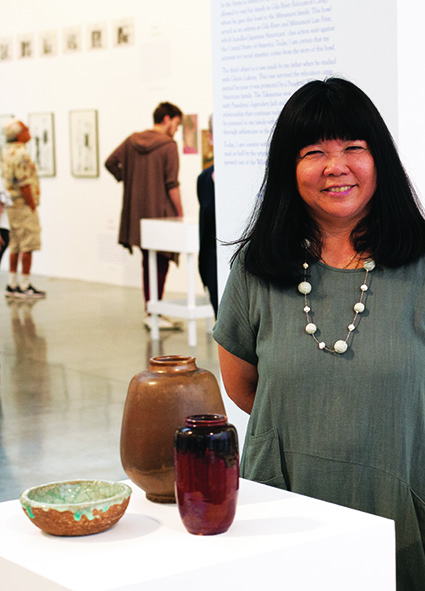 Ceramic Artist by Serendipity
Ceramic Artist by Serendipity
Otis College Extension is where it all began for Takayama-Ogawa. She walked into her first ceramics class here in 1986, and it upended her life.
She’d signed up with the idea of making coffee mugs for every middle school teacher at Crossroads, the Santa Monica-based school where she taught English and U.S. history and was Academic Dean. Once her hands touched clay, however, Takayama-Ogawa found she didn’t want to let go. Over the next four years, she retrained and reinvented herself through Otis Extension courses.
Now as an Otis faculty member and Extension instructor, Takayama-Ogawa brings sky-high expectations to the clay studio, demanding “good, professional-level work” even of novices. Her hybrid courses mix Extension students with BFA and MFA students. “It’s a real blend of accomplished people of all ages and experiences,” she says. Partners in law firms, directors of entertainment studios, and vice presidents of shoe design companies work side-by-side with talented young art students, and everyone benefits.
No technique is too esoteric: hand-building, slab construction, throwing, plaster mold-making, casting, and 3D printing are all fair-game. Every session provides experiences in the Asian, European, and Native American ceramic traditions. Under-glazing, over-glazing, and commercial and formulated glazes are then paired with firings at different temperatures.
“Craft in America” Connections
An advanced course revolves around a theme, defined by a design brief from the Craft in America Study Center. Last spring’s assignment called for “a tabletop item for a high-end Los Angeles restaurant.” Over the semester, Otis students proposed, sketched, and constructed their tabletop pieces for judging in a competition sponsored by the PBS-affiliated institution. One student was subsequently invited to participate, along with Takayama-Ogawa, in a Craft in America Study Center gallery show. Another was invited to exhibit at Freehand Gallery, owned by Craft in America founder, Carol Sauvion.
Sauvion is also a longtime sponsor of “Made in L.A.,” a Liberal Arts and Sciences course that Takayama-Ogawa leads in Otis College’s Creative Action curriculum. Team-taught with Jo Lauria, former Decorative Arts Curator of LACMA, the popular core course travels to Southland museums, where Otis students engage in purposefully curated “treasure hunts” to help them see exhibitions critically. One recent Getty Center visit had student teams scrutinizing the picture frames in the “Renaissance Nudes” show and studying wall-shadows to deconstruct the lighting decisions made by visual display designers.
3-D Sculpting Innovator
In another role at Otis College, Takayama-Ogawa directs the ceramics component of the BFA Product Design program. Two of her recent mentees, Christopher Fong (BFA Product Design, ’13) and Emi Ichikawa (BFA Product Deisng, ’15), received national recognition after winning the prestigious Windgate Fellowship.
The $15,000 prize recognizes design mastery in many different materials, and both Fong and Ichikawa used clay-integrated digital prototyping—a technique pioneered by Takayama-Ogawa—in their ceramics entries. The method involves designing an object in CAD modeling software, printing it in plastic or styrofoam, casting the 3D prototype in plaster, and then slip casting it for ceramic mass production.
Though she’s a trailblazer in 3D ceramic sculpting, when it comes to technique, Takayama-Ogawa doesn’t play favorites. Rapid prototyping “is like any other tool—like extruders or the potter’s wheel,” she says. A fully formed artist must master them all.
“I won’t allow students to dumb-down their making skills with software,” she insists.
In Takayama-Ogawa’s studio, 3D printing is reserved for special cases—like the highly articulated seeded buns of Otis College Extension student Matthew Maude’s hamburger covered containers.
“3D printed forms never seen before, either too difficult or time-consuming to fashion by hand—that is my standard,” Takayama-Ogawa stipulates.
Family Roots in Clay
Though Takayama-Ogawa came to ceramic art by serendipity, the Pasadena native actually has a long pedigree in clay production. She traces her ancestry back to ancient kiln founders in 15th-century Japan, and she’ll often bring examples of cobalt and Imari pottery from her private family collection to class. Other samples come from swap meets and thrift shops, which she trawls for unclaimed ceramic treasure. “Sometimes I get lucky,” she says.
She’ll lay out five ceramic pieces in the studio and ask her students to identify the oldest. Then she’ll make them justify their choice. In another class activity, she’ll hold up a pot and challenge students to describe how it was fabricated, painted, and fired.
Pedagogy for Potters
Takayama-Ogawa rarely lectures. She holds a master’s degree in education from Stanford, and she brings that background to bear in her teaching style, which is strongly geared toward visual and kinesthetic learners—“people who think through their hands,” as she puts it.
Takayama-Ogawa brings a deep connection to clay in part thanks to a rock-solid foundation in geology. Her UCLA undergraduate degree was in Geography and East Asian Studies, and she readily shares both cultural and geological insights with her students. One of them recently hit pay dirt selling an original glaze formulation to a commercial manufacturer.
She emphasizes the business side of art, teaching students how to professionally photograph and package their creations for safe shipping. Takayama-Ogawa requires them to keep detailed spreadsheets of material costs, so they can appropriately price projects for the popular end-of-semester ceramics sale at Otis College. They also learn to keep track of their collectors, sending exhibition invitations, and following up sales with thank-you notes.
“This is the way I was taught at Otis when I was an Extension student,” says Takayama-Ogawa, who trained under Ralph Bacerra. “They begin their careers this way.”
Related News
